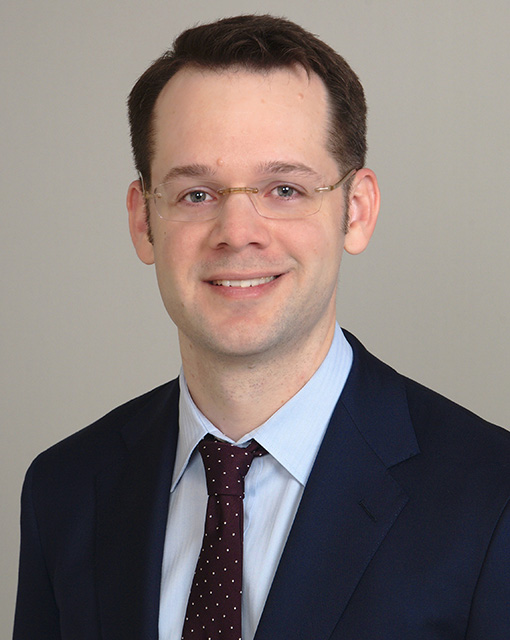
Spine and Neurosurgeon
When you think of arthritis, creaky knees, stiff hips or painful, swollen fingers might come to mind. Millions of Americans have arthritis to thank for troublesome knees, hips or hands. But if your neck feels stiff or you have an achy lower back, the cause may be arthritis as well.
Arthritis is the redness and swelling that occurs in a joint or surrounding connective tissue where two or more bones meet. “What many people may not realize is that arthritis is also fairly common in the neck and back, especially with advancing age,” says a spine and neurosurgeon on the medical staff at Texas Health Harris Methodist Hospital HEB and at Texas Health Neurosurgery & Spine Specialists, a Texas Health Physicians Group practice in Bedford. “Like the rest of the body, the discs and joints in the neck and back can break down due to wear and tear. Many people over the age of 60 will experience a degenerative type of neck or back arthritis in their lifetime.”
Arthritis can occur anywhere along the spine, but is most frequently in the lower back (lumbar spine). When arthritis is due to wear and tear, it is called osteoarthritis (OA). Osteoarthritis results in less padding between the joints, vertebrae and discs in the spine, causing them to rub against each other. In severe cases, arthritis in the spine can cause spinal cord or nerve root impingement, resulting in radiating pain down the arms or legs.
Age is a significant risk factor for neck and back arthritis, but Dr. Hruska points out that it’s not the only cause. Others include:
- Joint injury or overuse – Sudden or repetitive stress on a joint can lead to damage.
- Gender – Women are more likely to develop certain forms of arthritis than men.
- Obesity – Extra weight puts more stress on joints, particularly weight-bearing joints like the lower back.
- Genetics – People who have family members with OA, for example, are more likely to develop the condition.
- Smoking – Smoking is a big contributor to arthritis of the spine.
Other Types of Arthritis
While osteoarthritis is the most common type of arthritis, affecting some 32.5 million American adults, there are other forms of the disease that can impact neck and back health.
Rheumatoid arthritis (RA) is a chronic inflammatory disease caused when the immune system (the body’s defense system) mistakenly attacks the lining of the joints. It often starts in the smaller joints of your hands and feet and can spread to other parts of the body as the disease progresses. When RA affects the joints in the spine, it is far more common for the neck (cervical spine) to be affected than for the lower back.
Psoriatic arthritis is a form of spondyloarthritis often accompanied by psoriasis, an autoimmune skin disease. For some people who have psoriatic arthritis, the condition involves the spine. When the spine is affected, it is known as axial arthritis or spondylitis. If you have psoriatic arthritis, you may experience pain in the neck or upper back but it is the lower back that is most often affected.
Reactive arthritis is a painful joint inflammation triggered by infection somewhere else in the body. Reactive arthritis in the spine usually occurs in the lower back. For many people, it lasts a relatively short amount of time — usually around three months to a year. However, some people can have random flare-ups years after they first get it.
What To Do About It
Although there is no known cure for arthritis, there are ways to live healthier with it. In most cases, treatment for neck and back arthritis is nonsurgical. It can be effectively treated and managed with medication, physical therapy and self-management activities to feel more in control of your health.
“Over-the-counter medications like aspirin, naproxen and ibuprofen can be used to help address pain, inflammation and swelling, and steroid-based injections and nerve blocks may be good for pain that radiates from the neck,” Dr. Hruska explains. “Physical therapy for neck and back arthritis usually entails doing specific exercises to help strengthen and stretch weak or strained muscles. It can be effective in improving range of motion. The foundation of what we want to achieve with physical therapy for the neck and back is to help promote better posture and the way a person moves.”
While you can’t stop age-related joint degeneration from happening, you can try to slow its development or ease symptoms with simple lifestyle changes (CDC). Dr. Hruska recommends the use of cold compresses to relieve stiffness and swelling, a supportive pillow and mattress, and a headset for prolonged talking on the phone. Also important is to not smoke. Smoking decreases the effectiveness of some drugs used to treat arthritis. And smoking can make it harder for you to do activities that relieve arthritis symptoms — like exercise.
Surgery is usually a last resort for neck and back arthritis, but it may be needed if the arthritis causes instability or severe spinal cord or nerve root impingement.
“Neck and back arthritis can become debilitating, especially if there is compression of the spinal cord, which can lead to loss of strength, coordination and balance. It’s important to talk with a spine specialist early on to get an accurate diagnosis. Together, we can work to lessen the symptoms and prevent the disease from getting worse,” Dr. Hruska says.
Take the Back Health Assessment to measure your back pain or visit YourBackHealth.com for more information.
Ready to schedule an appointment? Find a back and spine specialist on the medical staff near you.

